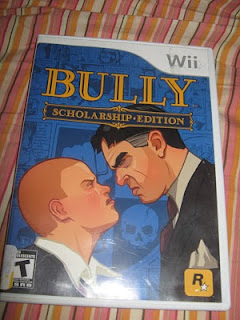
And it’s now officially summer time. In the northern hemisphere that is. That means it’s time to relax, go somewhere warm, maybe the tropics. Startropics that is. Here’s Startropics for the Nintendo Entertainment System.
You play as Mike in this game, who goes to the fictional “C-Island” to visit his uncle, Dr.Jones. But once he gets on the island, he finds he’s a bit too late, since his uncle was kidnapped and dragged through a dungeon with some monsters. The island Chief gives Mike a Yo-yo and since he’s an “Ace baseball pitcher”, he can turn it into a weapon. (I would hate to see what Barry Bonds could do with it.) After he emerges from the first cave, he still hasn’t found Dr.J, but he finds his sub which also has a tracking beacon on it to locate him. It doesn’t take a genius to figure out what happens next.
Now I’m going to activate the first ever spoiler alarm (which I don’t have a sound FX for since it’s the first one) to talk about something that bugged me. In the last level, you learn that it’s aliens that have done the whole thing. This comes straight out of right field. I think it was supposed to be some kind of twist or something, but to me it just feels incredibly tagged on. Otherwise, the game’s story works through and through: its low key but still creative and everywhere else you visit feels really organic.
When I played the game, everyone who never saw it before said the same thing: “Hey, that looks like Zelda.” Other then the graphics looking like Zelda 2, but overhead most of the time, the game play itself is quite similar to Zelda: I can remember one really happy video game nerd describing it as Zelda with a Yo-yo. Most of your time will be spent in dungeons, killing enemies and figuring out the puzzles to get to the end. There are few differences from Zelda though. First, unlike most of the Zelda games I’ve played, this one is entirely linear. This limits the over world adventuring but increases the dungeon crawling. This can make the game either better or worse depending on your point of view. Also, this game puts an emphasis on jumping, which made them have to make the game mapped out entirely on a grid. You can jump a max of two squares ahead if needed, and though simple, they make some really neat puzzles with it. I can really describe it, you just have to experience it first hand, but trust me, if you like the 2D Zelda games, even though there’s a fair bit of differences, this should be up your alley.
Now I want to take the time to talk about something that this game is famous for, the “immersive letter”. This was a letter that came with the game that seemed to provide no purpose. That is, until a certain point in the game, where you receive a clue about putting a letter in water. If you took it and got it wet, 3 numbers would appear on the bottom and you then had to enter the code in the game. This was pretty cool. Unless you got the game second hand or rented it. In that case, you had no idea what the game was talking about and would have to resort to the internet to find out the code. I can only imagine that before the internet was readily available that you’d have to hope that one of your friends knew what to do, especially since it’s a 3 digit code, which would mean there are 1000 different combinations. On the Wii virtual console version of this game, there’s apparently an animation of the letter dipping revealing the code, so it’s good they fixed that. The point I’m trying to make is 747!! 747!!!





